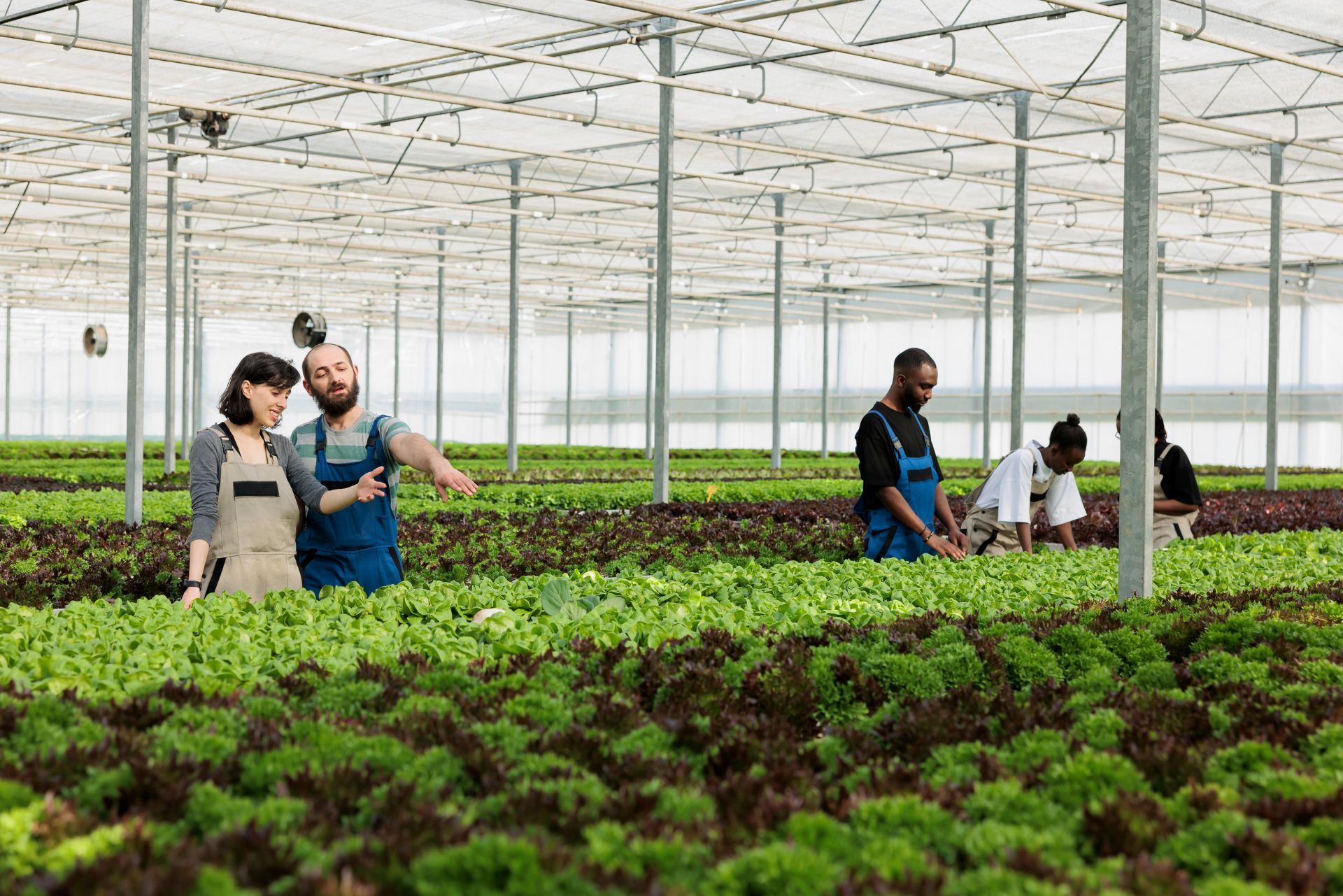Top 3 Recommended Business Policies
Index
Contact Us
Maryland’s agribusiness sector plays a vital role in the state’s economy, with dairy farming and crop production standing out as key contributors. However, like many agricultural industries nationwide, Maryland farmers face a range of risks—from unpredictable weather and market fluctuations to rising healthcare costs. Understanding the landscape of agribusiness insurance in Maryland is essential for farmers, agribusiness professionals, and stakeholders who want to safeguard their livelihoods and investments.
This comprehensive guide explores the current state of agribusiness insurance in Maryland, highlighting crop and dairy insurance programs, the impact of healthcare costs on farm viability, and emerging challenges such as climate change. Along the way, it draws on recent statistics and expert insights to provide a clear picture of what farmers need to know to protect their operations.
The Backbone of Maryland Agribusiness: Dairy and Crop Production
Maryland’s agricultural sector is diverse, but dairy farming remains a cornerstone. In 2020, the state’s dairy industry produced over 878 million pounds of milk, generating more than $150 million in sales. This reflects both the scale and economic importance of dairy farms, which collectively manage over 42,000 dairy cows across approximately 340 farms statewide. These figures underscore why protecting dairy operations with appropriate insurance is critical for maintaining the stability of Maryland’s agribusiness economy.
Crop farming is another significant component, with Maryland farmers cultivating a variety of crops that require protection from natural and economic risks. Crop insurance programs have become increasingly relevant in this context, offering financial safety nets that help farmers manage losses due to weather events, pests, and market volatility. The state's climate, characterized by its moderate temperatures and ample rainfall, supports a range of crops, including corn, soybeans, and small grains, which are essential for both local consumption and export. Furthermore, the rise of sustainable farming practices has led to an increase in the cultivation of organic crops, reflecting consumer demand for healthier and environmentally friendly food options.
For those interested in a deeper dive into Maryland’s agribusiness profile, the Maryland Department of Commerce’s agribusiness overview provides detailed insights into production statistics and economic impact. Additionally, local agricultural extension services offer valuable resources and educational programs aimed at helping farmers adopt innovative techniques and improve their overall productivity. These initiatives not only enhance the resilience of Maryland's agricultural sector but also foster a sense of community among farmers, who often collaborate on best practices and share their experiences to navigate the challenges of modern farming.

Crop Insurance in Maryland: Trends and Benefits
Crop insurance is a federally subsidized program designed to protect farmers against losses caused by natural disasters or drops in commodity prices. In Maryland, participation in crop insurance has historically been lower than in some other regions, but recent years have seen a notable increase in adoption rates. This shift reflects growing awareness of the program’s value and the tangible financial returns it can provide.
For example, in 2011, Maryland farmers received over $30 million in crop insurance payments, which equated to approximately $1.80 returned for every dollar spent on premiums. This favorable ratio highlights the program’s effectiveness in mitigating risk and supporting farm income stability. Additionally, by 2012, farmers had invested more than $12 million in premiums covering over 6,600 crop insurance policies with liabilities totaling $359 million, demonstrating a substantial commitment to risk management.
Despite this progress, there remains room for growth in crop insurance participation. Many Maryland farmers are still underutilizing these federally backed programs compared to counterparts in other states. However, the upward trend suggests increasing confidence in the benefits of crop insurance as a tool for managing unpredictable agricultural risks.
One of the key factors driving this increased participation is the changing climate and its impact on farming practices. Maryland farmers are facing more frequent and severe weather events, such as heavy rainfall, droughts, and hurricanes, which can devastate crops and significantly affect yields. As a result, more farmers are recognizing the necessity of having a safety net in place to protect their livelihoods. Furthermore, educational initiatives and outreach programs by agricultural organizations and government agencies have played a crucial role in informing farmers about the various crop insurance options available, including multi-peril crop insurance and revenue protection plans.
To explore the specifics of Maryland’s crop insurance programs, the Maryland Department of Agriculture’s crop insurance page offers valuable resources and updates. Additionally, farmers can benefit from consulting with local agricultural extension offices, which provide personalized advice and assistance in navigating the complexities of crop insurance policies. These resources are essential for ensuring that farmers are adequately covered and can make informed decisions that align with their unique agricultural circumstances.
Healthcare Costs: A Growing Concern for Maryland Farmers
While crop and dairy insurance address many traditional agricultural risks, healthcare costs have emerged as a significant and sometimes overlooked challenge for Maryland’s farming community. Rising health insurance premiums and limited access to affordable healthcare options are increasingly cited as barriers to farm viability and new farmer entry.
Shannon Dill, an educator and leader of the Beginning Farmers Program at the University of Maryland Extension, highlights that worries about affordable healthcare are a limiting factor for many aspiring farmers. These concerns can deter individuals from pursuing farming careers or force existing farmers to make difficult financial trade-offs. The burden of healthcare costs can lead farmers to forgo necessary medical care, which not only affects their personal health but can also impact their productivity and the overall health of their farms.
Supporting this perspective, rural sociologist Shoshanah Inwood from the University of Vermont notes that healthcare affordability now ranks alongside traditional concerns like access to capital and land when it comes to farm sustainability. This shift underscores the need for policies and support systems that address health insurance challenges within the agricultural sector. Furthermore, the unique nature of farming—often characterized by seasonal work and fluctuating incomes—compounds the difficulty of securing consistent healthcare coverage, leaving many farmers vulnerable during off-peak seasons.
As the conversation around healthcare costs continues to evolve, initiatives aimed at improving access to affordable healthcare for farmers are gaining traction. Programs that offer sliding scale premiums based on income or that provide educational resources about navigating the healthcare system can empower farmers to make informed decisions. Additionally, community health initiatives that focus on preventative care and wellness can play a crucial role in mitigating long-term healthcare costs for farmers and their families.
For more on how health insurance impacts Maryland farmers, see the
University of Maryland’s research on health insurance and farm viability.
Climate Change and Its Impact on Agribusiness Insurance
Climate change is reshaping risk profiles across the agricultural landscape, and Maryland is no exception. Increasingly erratic weather patterns, including droughts, floods, and temperature extremes, pose new challenges for crop production and insurance planning.
A recent study focusing on the U.S. Corn Belt—an area that includes parts of Maryland’s agricultural region—predicts that climate change will double the annual probability of maize yield protection insurance claims by mid-century. This projection signals a rising frequency of crop losses that will impact insurance payouts and premium calculations.
Such findings emphasize the importance of adaptive risk management strategies. Maryland farmers and insurers alike must consider climate trends when designing coverage and setting premiums to ensure long-term sustainability. Crop insurance policies may need to evolve to address these heightened risks effectively.
Moreover, the implications of climate change extend beyond just crop yields. The increased prevalence of pests and diseases, driven by warmer temperatures and shifting precipitation patterns, can further threaten agricultural productivity. Farmers may find themselves needing to invest in new pest management strategies and crop varieties that are more resilient to these changing conditions. This adaptation not only affects their operational costs but also influences the risk assessments that insurers must undertake when evaluating potential coverage options.
In addition, the socio-economic dimensions of climate change cannot be overlooked. As farmers face greater uncertainty in their yields, the stability of local economies that depend heavily on agriculture may be jeopardized. Communities may experience shifts in employment opportunities, food security issues, and even migration patterns as agricultural viability fluctuates. Insurers, therefore, must take a holistic view that encompasses not only the financial aspects of agribusiness but also the broader impacts on rural communities and their resilience in the face of climate change.
For a detailed look at the study on climate impacts and crop insurance claims, visit
this research article on arXiv.

Strategies for Navigating Agribusiness Insurance in Maryland
Given the complex risk environment, Maryland farmers can benefit from a multi-faceted approach to insurance and risk management. Here are some key strategies to consider:
- Leverage Crop Insurance Wisely: Take advantage of federally subsidized crop insurance programs to protect against yield and revenue losses. Staying informed about policy options and deadlines is crucial.
- Consider Dairy Insurance Options: Dairy farms, which represent a significant portion of Maryland’s agribusiness, should explore insurance products tailored to milk price fluctuations and herd health risks.
- Plan for Healthcare Costs: Engage with local extension programs and agricultural organizations to identify affordable health insurance plans and resources designed for farmers.
- Monitor Climate Risks: Stay updated on climate projections and work with insurers to adjust coverage as necessary to reflect changing risk profiles.
- Utilize Expert Resources: Extension educators, agricultural economists, and rural sociologists can provide valuable guidance on navigating insurance complexities and emerging challenges.
Maryland’s Department of Agriculture and University of Maryland Extension offer ongoing support and educational programs aimed at helping farmers optimize their insurance coverage and risk management practices. These programs often include workshops and seminars that delve into the specifics of various insurance products, helping farmers understand the nuances of their options and how they can best protect their investments. Additionally, networking opportunities with fellow farmers can lead to shared insights and strategies that have proven effective in the field.
Moreover, as technology continues to evolve, farmers in Maryland should also consider integrating precision agriculture tools into their operations. These tools can provide real-time data on crop health, soil conditions, and weather patterns, which can be invaluable when assessing risk and making informed decisions about insurance coverage. By combining traditional risk management strategies with modern technological advancements, farmers can create a robust framework that not only safeguards their livelihoods but also enhances productivity and sustainability in the long run.
Conclusion: Protecting Maryland’s Agribusiness Future
Maryland’s agribusiness sector is a robust and vital part of the state’s economy, with dairy and crop production at its core. Insurance programs—particularly crop insurance—play a crucial role in safeguarding farmers against the many uncertainties they face. While participation in these programs is growing, opportunities remain to expand coverage and improve risk management approaches.
At the same time, emerging challenges such as rising healthcare costs and climate change are reshaping the risk landscape. Addressing these issues requires coordinated efforts among farmers, policymakers, insurers, and support organizations to ensure the long-term sustainability of Maryland’s farms.
By staying informed about insurance options, leveraging available resources, and adapting to evolving risks, Maryland farmers can better protect their operations and contribute to a resilient agricultural future.
For further information on Maryland’s agribusiness and insurance landscape, the
Maryland Department of Commerce’s agribusiness page remains an excellent starting point.

